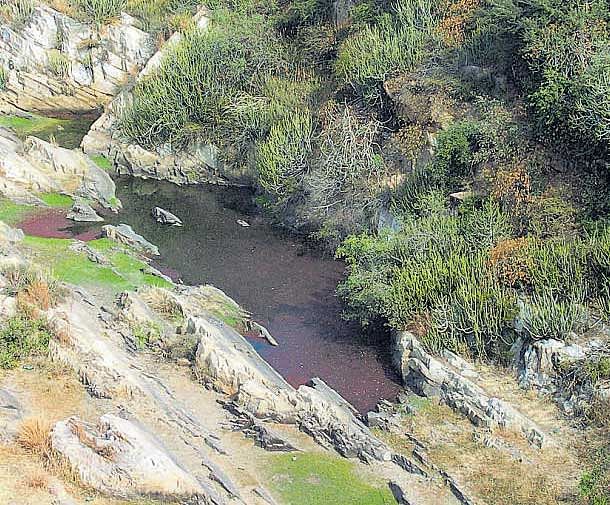
As I enter the Rao Jodha Desert Rock Park in Jodhpur through a 17th century sandstone archway, I am transported into a magical place in the desert. The lush vegetation inside the stone walls is in stark contrast to the arid, dusty city outside.
The Rao Jodha Desert Rock Park is meant for the conservation of the biodiversity of Thar Desert and spans 70 hectares on the slopes of the hill which houses the famous Meherangarh Fort. The Mehrangarh Museum Trust which manages the park has been conserving and developing a habitat where native plants of the desert thrive in a natural way. Various insects, local birds and small desert animals are found here.
True to its name, Rao Jodha Desert Rock Park showcases the various rock forms of the Thar. According to Denzil, our naturalist guide, the wave patterns on the rocks were formed in the Mesozoic era, when the Thar region was in the bottom of the ocean. When the rocks came up due to tectonic shift, the wave pattern got sunbaked. The park is area surrounded by distinctive volcanic rock and sandstone formations. The park is itself is situated on an outcrop of volcanic rhyolite.
Contrary to popular belief, deserts do have a number of plants and animals. The Thar Desert is more inhospitable than most deserts as almost a third of the region is covered by rocks. In spite of the harsh environment, some plants have managed to adapt. For instance, the lithophytes, the rock dwelling plants, have evolved a system to store the water found in the rock crevices in their stems.
The beginnings
Until 2006, the park was a degraded wasteland colonised by Prosopis juliflora (a kind of mesquite), which is an invasive weed. Unable to face the competition for space and water, the native plants had vanished. When the idea for the desert park was mooted, the first thing they did was to remove the thorny invader. The Mehrangarh Museum Trust asked environmentalist and filmmaker, Pradip Krishen to assist in rejuvenating the land outside the fort. However, it proved to be a difficult task as the weeds that were hacked grew back.
After many trials and errors, Pradip decided to take the help of Khandwaliyas whose forefathers had built the Mehrangarh Fort. The shrub was painstakingly chiseled out by hand. Then, native desert plants were brought in and nurtured. Some of the native plants which had become rare are grown in a nursery here.
Most of the native plants of the desert, from the golden flowered Rohida tree to the soft desert cotton bui have found a niche here. A tailorbird is busy building its nest in the thor (Euphorbia caducifolia). Shade is greatly valued in the desert, and thor, with its large clumps, is a natural shelter for many desert mammals and plants. The kair bushes look like an unwieldy bundle of sticks, but in the monsoon season, they will be bursting with orchid-like pink flowers, which later produce fruits.
My attention is caught by an elusive perfume and I look for its source. Denzil shows me a twiggy shrub without a single leaf. A few little white flowers are growing from the tip of the grey-green branches. It is called kheer kheemp and Denzil tells me that many of the desert plants have done away with the need for leaves, and make do with their green stems.
The trail I take snakes down to a gorge, which leads me to a tunnel. My guide tells that this was once a waterway connecting the lake to the city of Jodhpur. Just at the entrance of the tunnel I come across the Dabi bush Cadaba fruticosa, a flowering shrub, full of large, ivory white flowers. As I come out of the tunnel, I come near a pond filled with white water lilies. I sit on a stone bench in the shade of a ber tree laden with unripe fruit, and enjoy the stark beauty and appropriateness of the desert plants.